NEWSROOM
Here we share with you various MCNEX stories.
- TitleA new vision for safety! Thermal cameras DATE 2023-11-24
-
A new vision for safety! Thermal cameras
Thermo-imaging CameraAutonomous driving technology is rapidly evolving and is innovatively improving road safety and the driving experience. This development utilizes various sensors and technologies, and technologies that safely support the operation of vehicles play an important role in the autonomous vehicle industry. These autonomous driving technologies are still in the development stage, and as the level of autonomy progresses beyond Level 3, thermal imaging cameras are being required for high-performance ADAS and autonomous driving platforms.
One of the technologies owned by MCNEX, the thermal imaging camera, is primarily used for monitoring driving conditions at night and is one of the technologies for safe driving. We will look into the role and importance of thermal imaging cameras in autonomous vehicles.
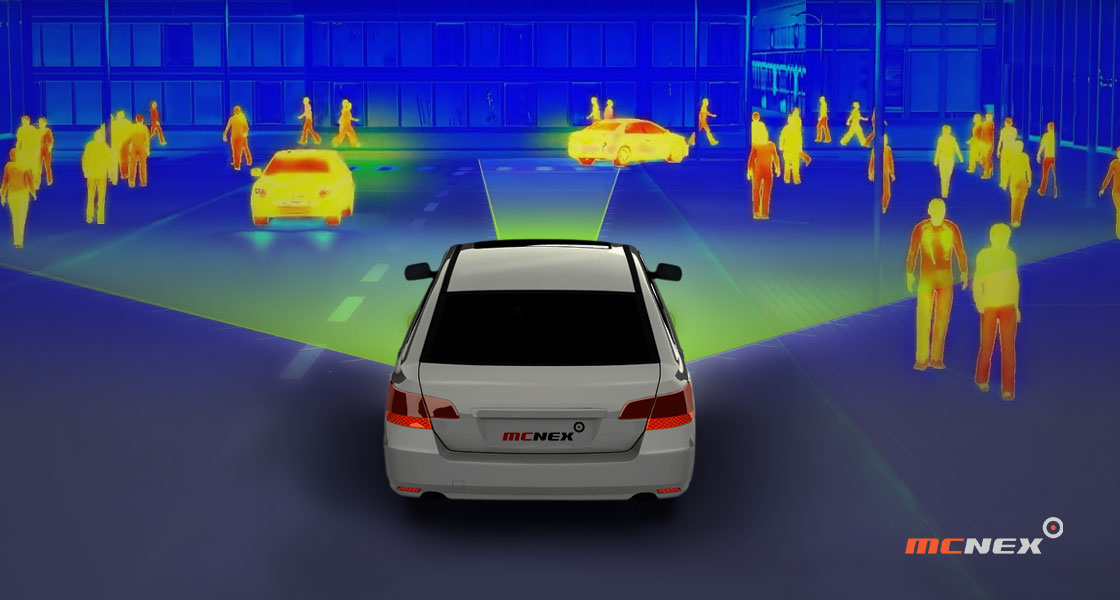
1. What is the thermal imaging camera technology owned by MCNEX?
A thermal imaging camera is a device that uses thermal radiation to detect and visualize the heat of objects. These cameras can detect the heat of objects both at night and during the day and perform exceptionally well even in adverse weather conditions such as fog, snow, and rain. Thermal imaging cameras are different from traditional optical cameras because they are based on thermal information, which means they are not limited by visual visibility.
In autonomous driving, thermal imaging cameras are part of the sensor system of autonomous vehicles, serving as devices that recognize the surrounding environment through heat detection. These cameras use infrared sensors to detect the heat of objects, create images based on temperature differences, and use these differences to detect entities such as people, animals, and vehicles. When combined with other sensors such as LiDAR, radar, and visible light cameras, they enhance the recognition capabilities of autonomous vehicles.
According to some research, thermal imaging cameras help to strengthen safety features such as Automatic Emergency Braking Systems (AEB) and are advantageous in situations where visible light cameras or LiDAR may be limited, as they can identify obstacles even in extreme weather conditions. Through sensor fusion with artificial intelligence systems, they can be combined with other sensor data, creating more accurate 3D maps of the surrounding environment, predicting hazards, and helping to determine safe driving paths.
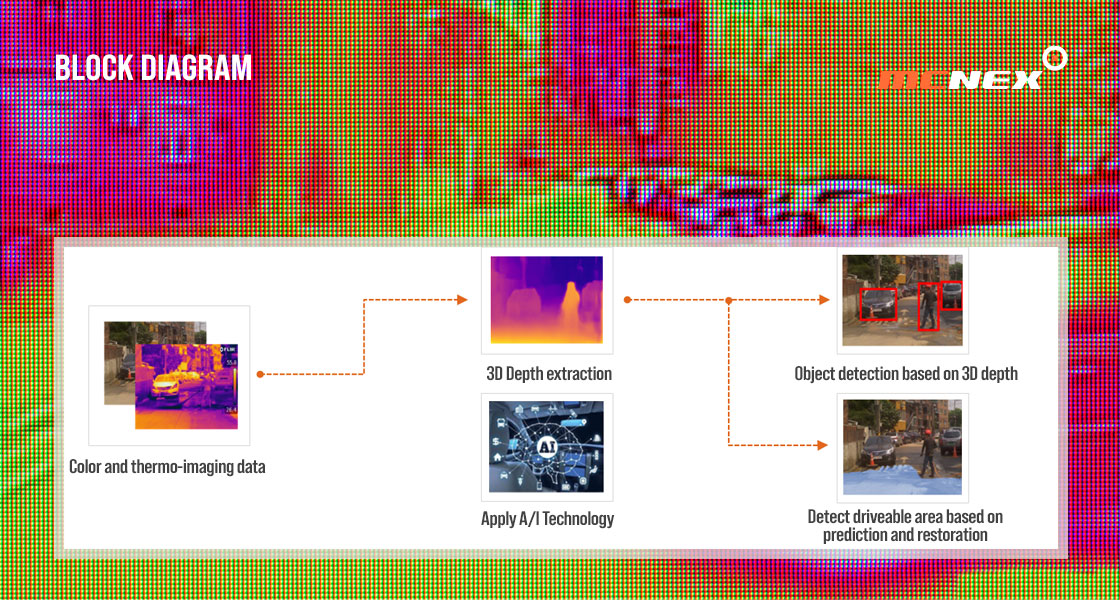
2. How Thermal Imaging Cameras Work
Thermal imaging cameras detect the heat flux (a value representing the heat of an object) and convert it into a visual image. In autonomous vehicles, thermal imaging cameras are used as excellent auxiliary sensors in night-time or low-visibility environments, and through data fusion with other sensors, they contribute to the vehicle's ability to recognize and judge the surrounding environment more safely and accurately. The working principle of these cameras can be simply explained as follows.
Detection and Conversion of Heat FluxEvery object emits infrared radiation according to its temperature, and thermal imaging cameras operate by detecting this infrared radiation. That is, they detect the thermal characteristics of objects and receive the infrared radiation inside the infrared sensor, converting it into an electrical signal. The intensity of this electrical signal varies according to the amount of heat detected.
Creation of Thermal ImagesThe electrical signals are processed and converted into digital images. Objects that emit more heat appear brighter in the image, while those that emit less appear darker. Because thermal imaging cameras create images based on temperature differences, objects with the same temperature appear in similar colors, while those with different temperatures are shown in different colors. This allows vehicles to easily identify important objects such as pedestrians, animals, or other vehicles.
Data Analysis and ResponseThe generated images are analyzed by the central processing unit of the autonomous vehicle. AI-based software interprets these images to extract information about the surrounding environment and to determine necessary adjustments for the vehicle's driving path, speed, and steering.
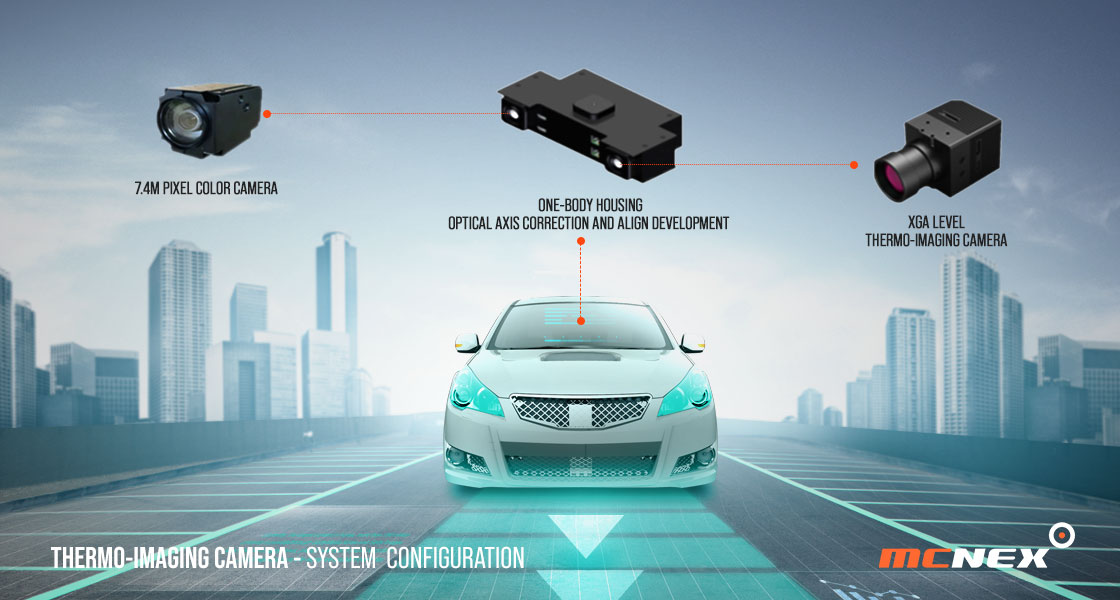
3. The Necessity of Thermal Imaging Camera Technology in Autonomous Vehicles
A major challenge for autonomous driving is preparing for all driving conditions, as roads are filled with complex and unpredictable situations, and cars must be able to collect as much information as possible to make the correct decisions every time.For this, an efficient sensor suite must be equipped in terms of cost-effectiveness, and the current standard sensor suite cannot fully meet the requirements for Level 3 and above.
Combination with Autonomous Vehicles
The recognition capability of thermal imaging cameras, unlike traditional sensors that rely on visible light cameras or radar, creates images using temperature differences. This allows for better detection of pedestrians, animals, and objects in dark environments or adverse weather conditions.
When used in conjunction with other sensors, thermal imaging cameras contribute to enhancing the robustness of the system and reducing errors. For example, in certain conditions such as snow or fog, the performance of traditional cameras or LiDAR sensors may degrade, whereas thermal imaging cameras operate effectively in these environments.
Thermal imaging cameras can detect temperatures without direct contact with objects and provide data in real-time with a quick response time, enabling the autonomous driving system to react quickly and take necessary actions. This is a significant advantage in obtaining information about the surrounding environment for vehicles.
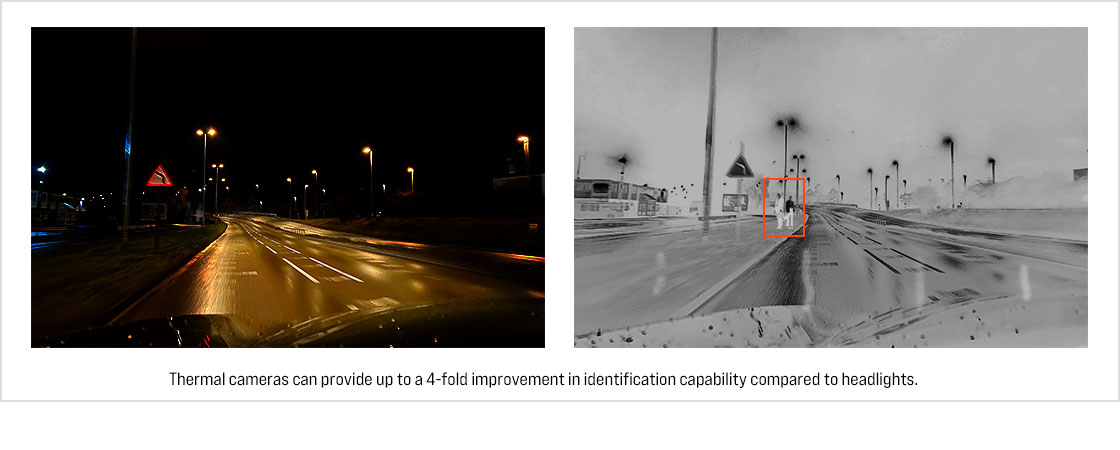
Creating a Safe Driving EnvironmentThermal imaging cameras perform excellently even in situations where visibility conditions are limited. They help overcome long-distance or visibility issues during the day and night and improve road safety, providing high visibility during night driving which contributes to the safety of drivers and passengers.
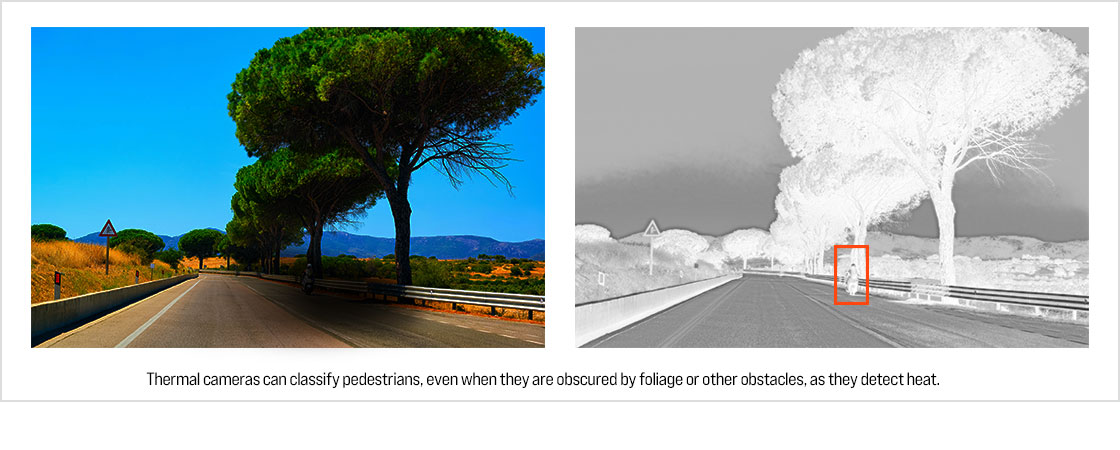 Recognition of Driving Environment in Autonomous Driving
Recognition of Driving Environment in Autonomous DrivingThermal imaging cameras are used to detect and avoid obstacles on the road based on the thermal characteristics of objects. They monitor the road situation in real-time and detect thermal changes occurring in the surrounding environment. Through this, the autonomous driving system can identify and predictively make driving decisions for surrounding vehicles, pedestrians, animals, etc., supporting accident prevention and safe driving of the car.
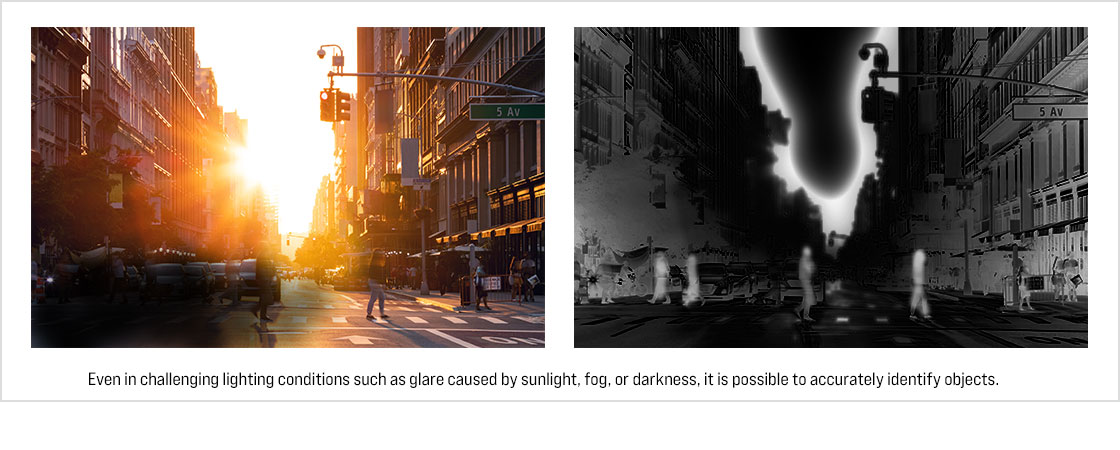
Response to Turbulence and Environmental Changes
Thermal imaging cameras can detect objects even in adverse weather conditions such as turbulence, fog, snow, and rain, enabling the autonomous driving system to maintain safe driving in these environments and respond to unexpected environmental changes while driving.
The Future Value of Thermal Imaging Cameras
Thermal imaging cameras have already proven their efficacy through practical experiments in enhancing the safety of autonomous driving technologies. In particular, the combination of thermal imaging cameras with radar data has significantly improved the stopping efficiency of vehicles in Automatic Emergency Braking Systems (AEB).
Thermal imaging camera technology continues to evolve and is expected to play an important role in improving the safety and performance of autonomous vehicles. Furthermore, the integration of thermal imaging cameras with other sensor data is anticipated to further enhance the reliability and accuracy of autonomous driving systems, and the future of autonomous vehicles is expected to greatly assist in creating a safer and more efficient road environment.
In conclusion, thermal imaging cameras are establishing themselves as one of the key components of autonomous vehicle technology and are playing a significant role in innovatively improving road safety and driving experiences. The advancement of such technology is expected to contribute to the pursuit of safety in future autonomous driving.